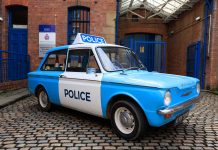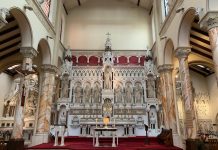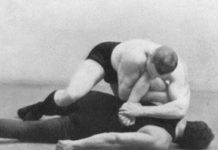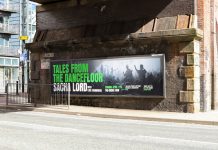The Science and Industry Museum has announced today that it will reopen on Wednesday 19 May, giving a first look inside a major new exhibition that will unveil a world of secret communication and inspire security sleuths of the future in the North.
Free tickets can now be booked for Top Secret: From ciphers to cyber security, which explores communications intelligence and cyber security over the course of 100 years. It has been curated by the Science Museum Group with the help of expert advisors at GCHQ – the UK’s intelligence and cyber agency.
The remarkable world of codebreaking, ciphers and secret communications will be uncovered through extraordinary objects, interactive puzzles and first-person interviews. From the First World War to the latest in cyber security, fascinating stories will be revealed via hand-written documents, declassified files and artefacts from the historic collections of the Science Museum Group and GCHQ.
Visitors will begin their journey over a century ago by exploring how Britain protected its skies during the First World War. From there, and for the first time at the exhibition’s run in Manchester, a collection of objects will be displayed that track the remarkable work of Alan Turing and the team at Bletchley Park, who broke German ciphers systems in the 1940s.
The exhibition then drops visitors into the heart of Cold War Britain and uncovers how intelligence agencies and police foiled one of the most successful spy rings to operate during that time, before transporting them back to the 21st century to examine the challenges of maintaining digital security and how the new technologies of today have transformed how we communicate, bringing risks as well as opportunities.
Amongst over 100 objects in the exhibition that reveal fascinating historical stories of communications intelligence from the last century are cipher machines used during the Second World War, secure telephones of the type used by British Prime Ministers, and an encryption key used by Her Majesty The Queen. Other exhibits also chart the more recent history of cyber security and the work of GCHQ’s National Cyber Security Centre (NCSC), which works to defend against cyber attacks. Visitors will be able to see a computer infected with the WannaCry ransomware which, in 2017, affected thousands of people and organisations, including the NHS.
The exhibition will showcase the ingenious work of Alan Turing, whose story is intrinsically tied to Manchester, through items that have been introduced to the exhibition specifically for its run in the city. These include marketing materials featuring Turing for the Ferranti Mark 1 computer, one of world’s first commercially available digital computers, a delegates list with Turing’s name on it for the inaugural Manchester University Computing Machine Conference in 1951, and correspondence between Turing and Eric Jones, the then-director of GCHQ. It will also tell the story of Turing and the people at Bletchley Park who broke the German Enigma and Lorenz cipher systems, allowing the British to read some enemy messages – a breakthrough that had a profound impact on the outcome of the Second World War.
Sleuths in the making can also take their own tour around the exhibition with a specially designed trail to help uncover the remarkable people and stories in the exhibition, and which also reveals the importance of STEM (Science, Technology, Engineering and Maths) skills in maintaining national security. The development of science, technology, engineering and maths (STEM) skills is central to the work of both the Science Museum Group and GCHQ, and this exhibition highlights the huge diversity of skills practised every day that can be used to pursue a career in STEM.
The Science and Industry Museum has been closed since 5 November due to Government coronavirus restrictions. The launch of Top Secret on 19 May marks its eagerly awaited reopening, as well as the revival of the wider cultural sector following the next stage of lockdown measures easing.
Sally MacDonald, Director of the Science and Industry Museum, said: “After more than 27 weeks of closure during the latest lockdown, we are so excited to be welcoming visitors back soon. Museums provide a really important public service and are so important for our health and wellbeing. During a brief reopening between lockdowns last summer, we safely welcomed over 34,600 visitors, which shows just how much people want to get back and enjoy the physical experience of being in the museum. We have proven measures in place to safely welcoming visitors back, and I’m delighted that we’ll be doing this in just a matter of weeks.
“Our museum tells the stories of Manchester pioneering past and ideas that started here and went on to change the world. STEM skills have been at the heart of this innovation, and I’m delighted that we’re hosting Top Secret, which showcases the incredible heights that can be achieved through the application of these skills, at a time when the importance of STEM across the region is more important than ever.”
Jeremy Flemming, Director GCHQ, said: “GCHQ has been at the heart of the nation’s security for over 100 years and to this day it gives the country a strategic edge – helping to protect the country, its people and our way of life.
“We want to give people from across the country a glimpse into our secret history, world-leading innovation and most of all brilliant people who continue to keep the country safe today. So I’m delighted Top Secret has now moved to Manchester where we recently opened a city centre office which is home to hundreds of our staff.
“At GCHQ we believe with the right mix of minds anything is possible. We hope Top Secret intrigues, excites and maybe even inspires the next generation of recruits from the area to consider a career with us.”
Top Secret originally opened at the Science Museum in London to coincide with GCHQ’s centenary in 2019. Its tenure in Manchester is especially significant following the opening of GCHQ’s newest site at the heart of the city. GCHQ is pioneering a new kind of national security from the Heron House offices, mentoring start-ups on tech challenges and working with universities on some of the most pressing national security challenges.
The development of science, technology, engineering and maths (STEM) skills is central to the work of both the Science Museum Group and GCHQ, and this exhibition highlights the huge diversity of skills practised every day that can be used to pursue a career in STEM. Government plans to establish a ‘cyber corridor’ in the North to promote growth in the digital, defence and technology sectors, and the subsequent need to inspire a new generation of intelligence and cyber security officers, makes the launch of Top Secret in Manchester particularly timely.
It is also significant as the inaugural exhibition to be hosted in the Science and Industry Museum’s new £5m Special Exhibitions Gallery. Designed by award-winning architectural practice Carmody Groarke, working alongside Manchester building contractor HH Smith & Sons, the new gallery has transformed the lower ground floor of the museum’s Grade II listed New Warehouse to reveal grand industrial beauty with stunning modern and sustainable design. Visiting Top Secret will be the first time members of the public have been able to visit the space as a gallery, set to originate and host some of the world’s best science experiences in the North.
A safe and enjoyable experience is the museum’s top priority. Visitors are being asked to observe social distancing, wear face coverings, follow one-way routes and book tickets for both entry to the museum and exhibition in advance so that visitor capacity can be managed.
Top Secret: From ciphers to cyber security will open on Wednesday 19 May and run until Tuesday 31 August. It is free, but booking is essential online (www.scienceandindustrymuseum.org.uk/whats-on/top-secret) or by calling 033 0058 0058. Visitors will also need to book a general admission ticket. More information can be found at www.scienceandindustrymuseum.org.uk.
Following its run in Manchester, Top Secret will tour to the National Science and Media Museum in Bradford in 2022. The exhibition is supported by principal funder DCMS and principal sponsor Raytheon, with media partner The Telegraph.







